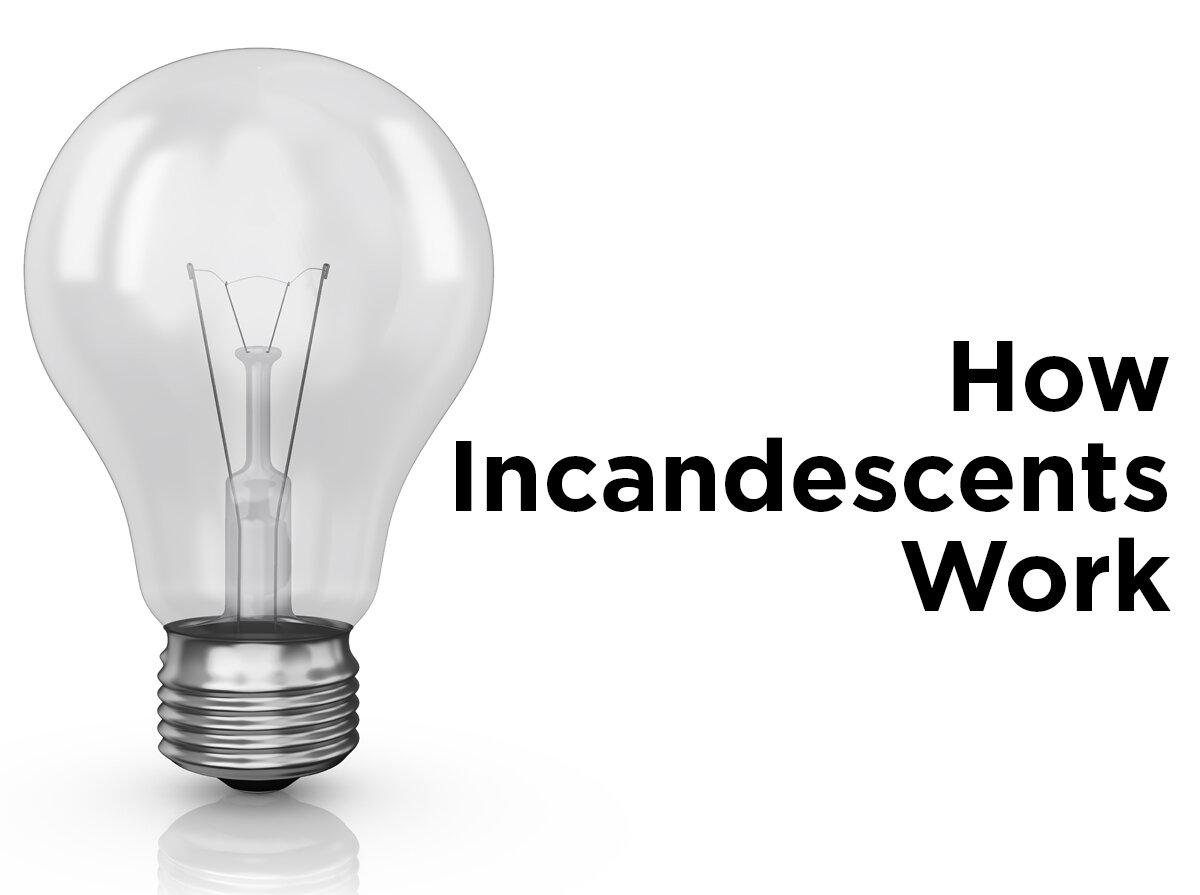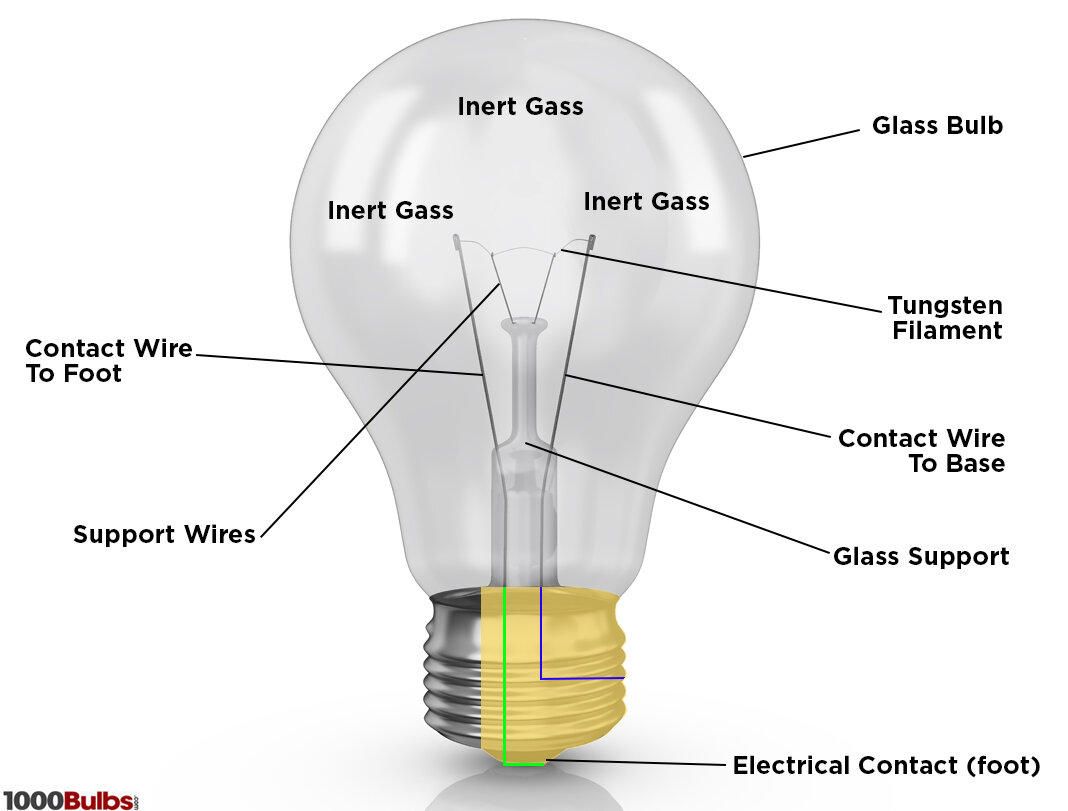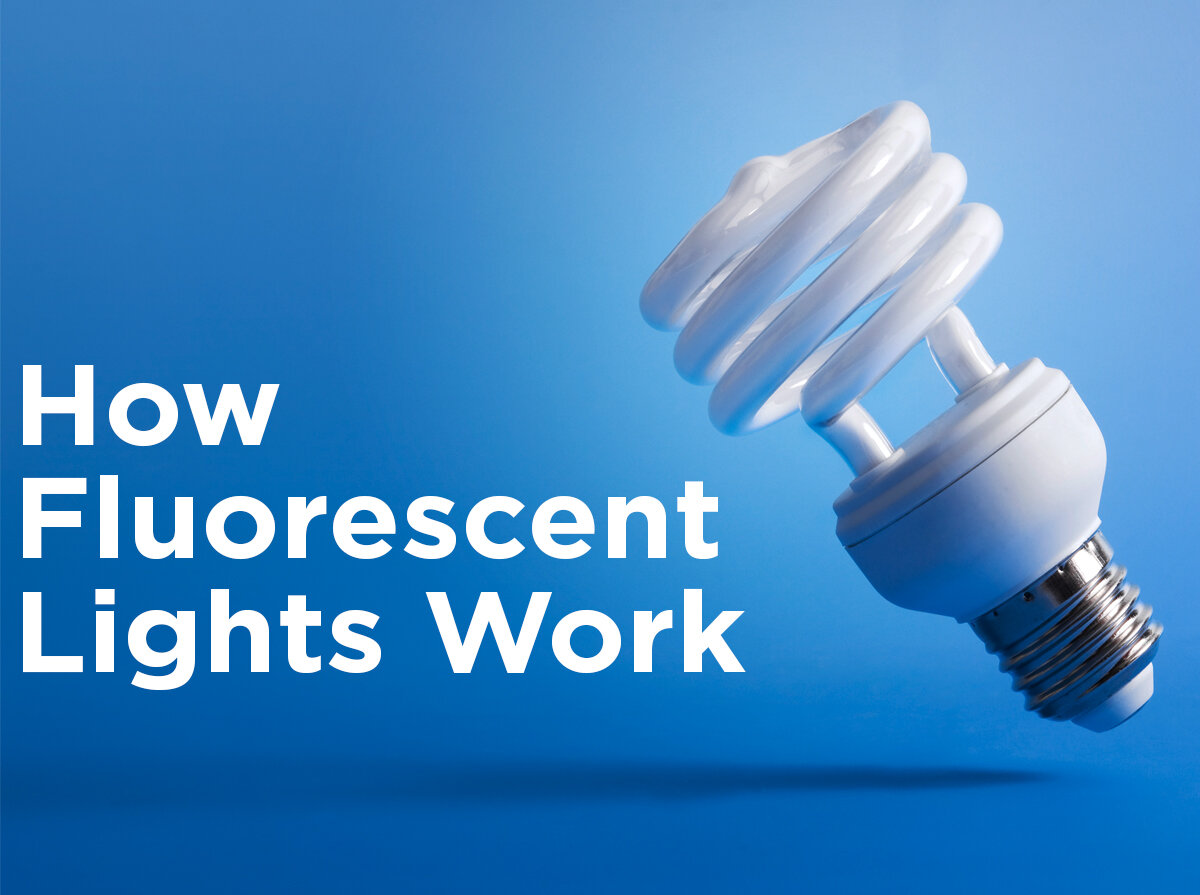How Incandescent Light Bulbs Work
Sometimes we take light bulbs for granted. We’re happy when the lights come on, but troubled when replacing a burnt out bulb causes major headaches. It’s important to understand how different light sources operate so you can shine the best light on the task at hand. Beginning with incandescents, we’ll cover the benefits and drawbacks of common light sources.
How an Incandescent Bulb Works
Incandescent light bulbs are the result of an electric current passing through a tungsten filament and heating it to a temperature hot enough to produce light a secondary output. The familiarly-shaped glass enclosure is a vacuum free of oxygen which disintegrates the filament. Sometime the enclosure (aka the envelope) is actually filled with an inert gas like nitrogen or argon. Inert gases, also known as noble gases, don’t often react to other chemicals and conditions, allowing them to preserve and protect the filament from evaporating when heated. Tungsten filaments are a common filament in many traditional light sources because pure tungsten has the highest melting point, lowest vapor pressure, and greatest tensile strength of all metals. Frosted light bulbs are a result of the powder coating on the inside of the glass enclosure.
Although incandescents are simple to manufacture and therefore inexpensive to purchase, an incredible amount of heat must be produced to make a decent amount of light. Approximately 95% of the electricity applied to the filament in an incandescent bulb is then lost as heat rather than light. Because of this inefficiency, manufacturers were inspired to design a more efficient light bulb.
How a Halogen Bulb Works
Fun fact: Halogen bulbs are incandescent bulbs. In addition to the bulb enclosure being filled with a noble gas like krypton or xenon, a small amount of a halogen gas, iodine or bromine, is added to the mix. Regardless of the inert gas present, eventually the filament inside an incandescent will evaporate or the gas will dissipate enough for the filament to burn. However, the presence of the halogen gas constantly regenerates the filament, causing escaping tungsten atoms to be redeposited. This regeneration process allows the filament to last much longer and extends the life of the lamp. The gases exist at a higher temperature and pressure than in incandescents. By high temperature, we mean that halogens bulbs are hot enough to cook food and should be handled with care since the oils from your fingers can create hot spots on the quartz glass of smaller bulbs and ruin them with uneven heating.
The Difference Between Halogen and Xenon Bulbs
Another fun fact: Xenon bulbs are halogen bulbs, which in turn makes them incandescents too. Specifically these halogen bulbs use xenon as the inert gas. The main difference is xenon gas is more willing to glow when in contact with electricity, so it takes less energy to achieve the same amount of lumens or brightness. That also means you don’t have to use as much energy running AC when trying to offset the heat because it takes less heat to produce the light.
Xenon light bulbs also emit less harmful UV rays and aren’t adversely affected by oils from your hands. Xenon gas is rarer than some of the other noble gases in the same family which make xenon lights more expensive. They are more safe and durable to use in areas like under cabinet lighting and car headlamps. Both halogen and xenon bulbs portray colors very accurately. They have the same CRIs (color rendering indexes) of 100 like their big brother, the incandescent. Yet halogen lights have a well-known, crisp white colored light, while xenon lights have a slightly warmer color temperature although not as warm as incandescent light.
Lighting Tip: The lifespan of a xenon light bulb is about 10,000 hours, which is 5 times longer than a standard halogen lamp’s lifespan of 2,000 hours.
Do you have a better understanding of how incandescents work or are there still some dark spots? Ask your question in the comment area below. We’ll cover fluorescents light sources next and what’s the difference between hot and cold cathodes? Our team of dedicated experts is standing by to shine some illumination on your situation, so give us a call at 1-800-624-4488 for an easy lighting solution.










